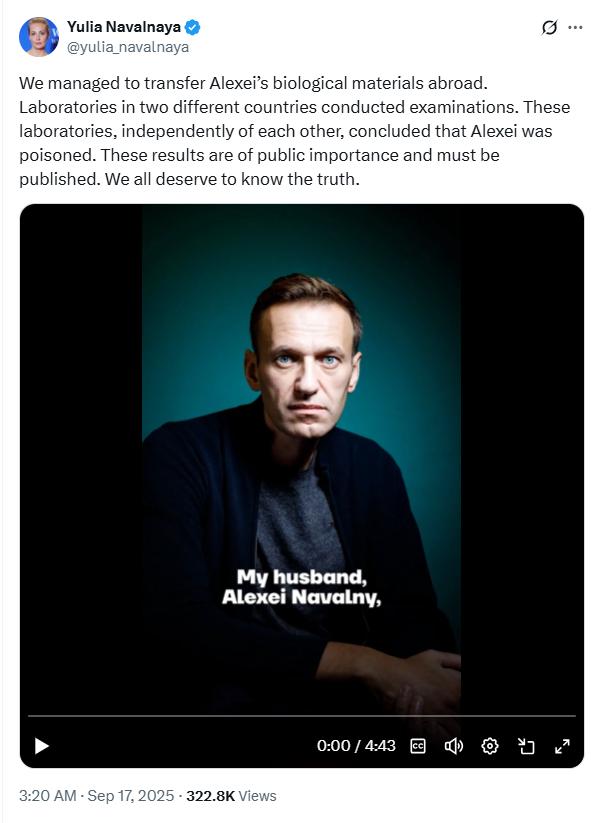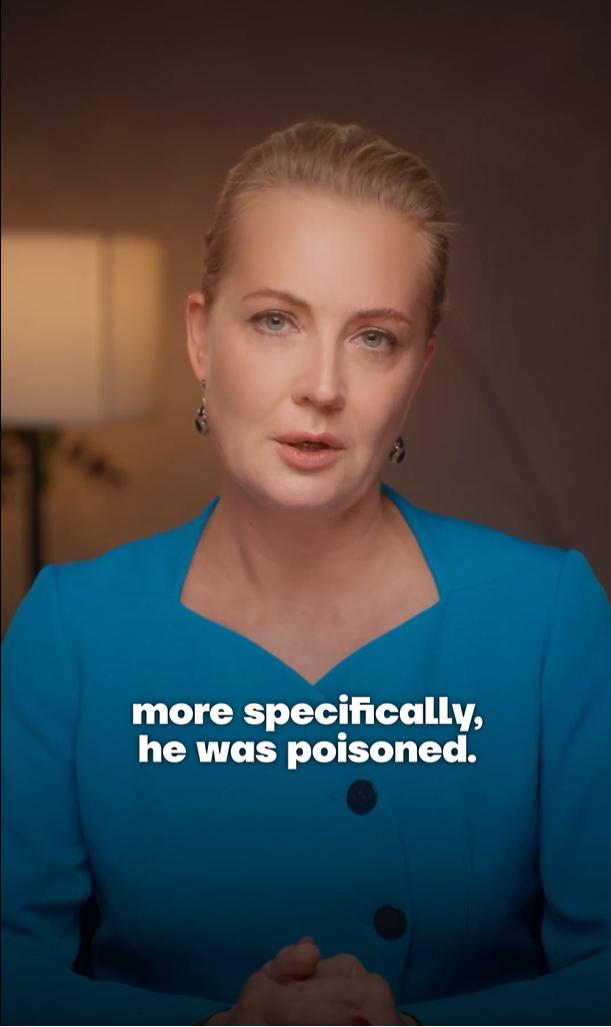Fresh evidence has reignited the Navalny case. On September 17, 2025, Yulia Navalnaya revealed that international laboratories confirmed her husband’s poisoning, urging transparency as a matter of public importance and human rights.
Sep 17, 2025 (Freedom Person)
On September 17, 2025, Yulia Navalnaya delivered a striking message: two independent laboratories abroad examined Alexei Navalny’s biological samples and concluded that he had been poisoned. The statement came a year and a half after his death in a remote Arctic penal colony, transforming a personal tragedy into a political and moral demand for accountability.
In a post on X (formerly Twitter), Navalnaya explained: “We managed to transfer Alexei’s biological materials abroad. Laboratories in two different countries conducted examinations. These laboratories, independently of each other, concluded that Alexei was poisoned. These results are of public importance and must be published. We all deserve to know the truth.”

According to people close to her late husband’s circle, the samples had been smuggled out of Russia in 2024 under great risk. Prison rules strictly controlled everything Navalny touched, and any attempt to remove material could have led to punishment for both him and those assisting. Navalnaya later told Western reporters: “We understand that this data is dangerous for those who helped us inside Russia. But the truth cannot remain hidden.”
The claim is simple yet explosive: both laboratories reached the same conclusion that Navalny was poisoned. What remains missing are the crucial details — the identity of the labs, the specific toxins, and the scientific protocols used. International experts note that without such information, the findings cannot yet be independently verified.

Moscow, for its part, has brushed aside the allegations as “baseless,” insisting that Navalny’s death was due to “natural causes.” Human rights groups, however, see the matter differently. Amnesty International said that, if confirmed, the results would be “yet another piece of evidence of poisoning being used as a political weapon in Russia.” Toxicologists and forensic specialists remain cautious, emphasizing that proof lies not in the statement but in the data itself.
Expert human rights advocate Vitali Ivaneko commented: “If the laboratories confirm the presence of a toxin, this would be an unprecedented case of repeated poisoning of a political opponent. Publishing these findings not only reveals the truth about Navalny’s death but also establishes a precedent for transparency in future investigations of political crimes. The international community will gain crucial evidence for investigations and potential sanctions.”
This development inevitably recalls August 2020, when Navalny barely survived an attack with a Novichok nerve agent — an assault confirmed by several European laboratories. Five years later, echoes of that earlier case add weight to today’s allegations. Navalny’s death in February 2024 had already set off international investigations and fueled debates over new sanctions; the possibility of another poisoning only sharpens the questions of responsibility.
For Yulia Navalnaya, the issue is larger than her husband’s fate. It is a demand for transparency and public safety. Concealing evidence of crimes against political opponents, she argues, endangers everyone.
Today, the world waits. If the laboratory reports are released, they could provide definitive confirmation of what many have long suspected. If they remain hidden, the unanswered question — how and why Navalny died — will continue to cast a long shadow not only over Russia’s political system but over the international community’s response to it.
By Victor Green for Freedom Person


